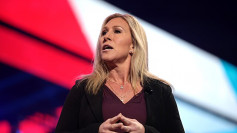"Help wanted" ads for salespeople, food servers, and postal workers are proliferating across the United States as businesses struggle to deal with a worker shortage caused by the pandemic, a wave of early retirements, and restrictive immigration laws.
According to government data, more than 10 million job openings went unfilled in June, while fewer than 6 million people were looking for work, despite employers desperately trying to increase hiring amid a consumer spending frenzy.
"We have a lot of jobs, but not enough workers to fill them," the U.S. Chamber of Commerce, which represents American businesses, said. Many people who quit their jobs when COVID-19 first ravaged the U.S. economy in early 2020 have never returned.
The Chamber calculated that if labor force participation - the percentage of the working-age population currently employed or actively seeking work - had been at pre-pandemic levels, there would be 3.4 million more workers today. It has dropped from 63.4 to 62.1 percent.
And what happened to all these people? Many people simply retired early.
The massive "baby boomer" generation had already begun to leave the labor force, but there has been an "acceleration in retirements" since the pandemic, according to Diane Swonk, the chief economist at KPMG.
Millions of people chose early retirement because they were concerned about their health and had enough assets to leave the workforce due to a booming stock market and high real-estate prices at the time. In the short term, "we're unlikely to get back to exactly the pre-pandemic level of labor-force participation because of the aging of the population" Bunker said. Swonk added,
"We haven't had immigration at the pace to replace the baby boomers."
The number of foreigners entering the country has been drastically reduced as a result of restrictions imposed by former President Donald Trump, as well as the impact of COVID-19.
The Chamber of Commerce also emphasized the importance of generous government assistance during the pandemic, which "bolstered people's economic stability - allowing them to continue sitting out of the labor force".
In 2020, a large number of women quit their jobs, in part because extended school closings forced many to stay at home to care for children. Those looking to enroll their children in daycare were frequently frustrated, as labor shortages affected the daycare industry as well.
Many employers have increased pay and benefits to entice workers to return. Analysts predict that if Americans' buying spree slows, businesses will require fewer workers.
The labor shortage is expected to ease slightly as the Federal Reserve continues to raise interest rates aggressively in an effort to combat inflation.






